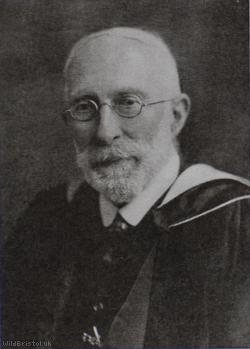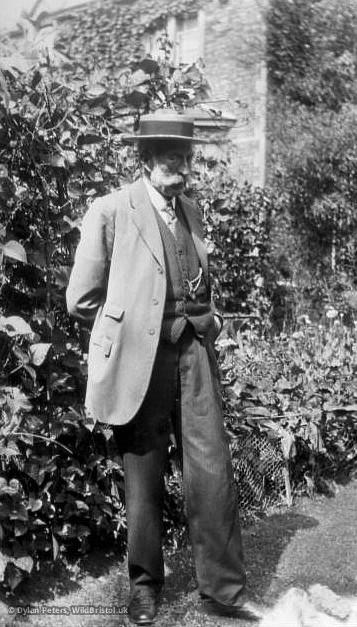James Walter White
James Walter White (J.W.White) was a famous Botanist and author of The Bristol Flora / The Flora of Bristol (1912) and edited Flora of the Bristol Coal-fields (for Bristol Naturalists' Society in 1886) he was also a special lecturer in Botany at the University of Bristol. Born in London, 8th of August, 1846, Died 26th of October, 1932 (aged 86). He was a businessman who owned a pharmacy in Clifton where it read 'stone, Giles, Schacht & Company'. He lived close to the Royal Fort by the University of Bristol. At the age of 25 he married Miss Mary Naldrett and had 11 children (seven sons and four daughters).
The Bristol Flora
The Bristol Flora by James Walter White, Special Lecturer in Botany at the University of Bristol, was first published in 1912 but is still regarded as one of the best British local floras ever writen. The area covered is far wider than the title suggests, for it extends as far as twenty miles into North Somerset, including the Mendip Hills and Cheddar Gorge and for the same distance into South Gloucestershire embracing the banks of the Severn and the South Western Cotswolds. The Flora is more than a list of species and their localities, as it contains a wealth of biological details of the rare and uncommon species and some common ones too, resulting from White's meticulous researches as well as those of other workers. Indeed, the Flora may be regarded as one of the first "biological floras" of an exceptional district floristically diverse but botanically coherent. A Supplement to White's Flora incorporating records, localities and further biological data from 1912 to 1970 is being prepared for publication.
Preface
This book is the outcome of an ideal hobby, cultivated in the spare moments of a business career. It is not too much to say that my love for botanical pursuits has brought me health, friends and recreation, with a host of delightful experiences that have amply compensated for the harassing cares of an exacting occupation; and, moreover, has rendered the collection of material for the following pages a congenial labour.
More than thirty years have gone by since, at the instance of the Bristol Naturalists Society, I began to compile an account of the local flora which, in its completed form, was published by the society in 1886. At that period I had not long been a resident in the city; had but an elementary knowledge of plants; and could afford only the smallest amount of leisure for study and investigation. The result was an inadequate sketch of the phanerogamic vegetation of perhaps the richest botanical area in Great Britain; but it was received more kindly than might have been expected and, I believe, has served its purpose fairly well.
During the years that succeeded, field-work was continued with increasing zest as additional time became available; the district has been much more thoroughly explored; herbaria have been searched for local examples; and libraries ransacked for recorded observations of former generations of botanists. Real and general progress in tracing the distribution of flowering plants around our city has, in fact, resulted. In obtaining material for a History of Bristol Botany from the earliest times no literature likely to throw light on the occurence of Bristol plants in bygone ages has been knowingly neglected. It may be deemed that the two years given to this task were well spent in placing on permanent record all the accessible data relating to a most interesting subject. As regards the body of the work, the long delay in publication cannot be regretted, since it happened that the last two or three years proved more profitable in discoveries than any previous period. To strive for finality in such an effort would, of course, be futile; for imperfection is of the very essence of the undertaking. This is but a product of the industry of one lifetime. The keener eyes and clearer brains of the next generation may be trusted to raise the work to a higher level.


Here White is quite possibly in his garden. The photo is from a negative in the Special Collections at the University of Bristol library so it is copyright, but it is much better than the photograph of him in old age used in his obituaries.